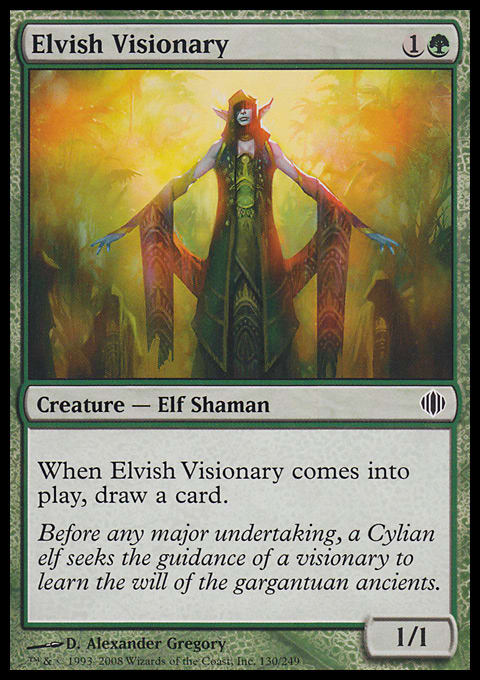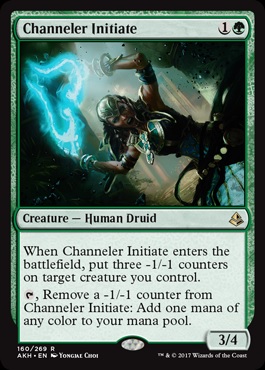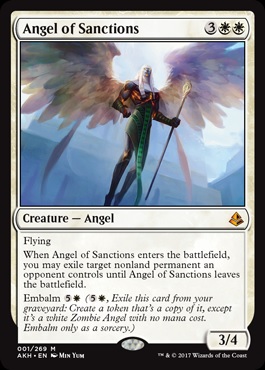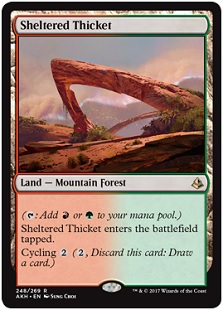I’m currently sitting in a food court at a casino. My friends and teammates are attempting to salvage what was an underwhelming weekend for them at the SCG Worcester Legacy Open, while I hammer out this article and reflect on what was one of the most interesting tournaments I’ve ever played in.
For those who didn’t get a chance to catch the coverage this past weekend, I had a pretty good tournament. I’ve done well in a reasonable amount of events, but I’ve never dominated the swiss portion of an event to the extent that I did this past weekend. I didn’t actually drop a match in the swiss, and I only lost four games. But while I didn’t actually lose a match, I did only finish 13-1-1. How I earned the loss is one of the more noteworthy topics of discussion from my tournament, so I’d like to touch on that a bit as I’m quite curious to hear others’ opinions on the matter.
I was locked for Top 8 when I picked up my twelfth win in the same number of rounds. In Round 13, I was paired against someone I’m normally pretty friendly with. I don’t know him particularly well, but he’s someone I’ve spoken to on numerous occasions and have had nothing but positive interactions with. When I was paired against him, he asked me if I would concede to him because I was already locked for Top 8 at this point in time (I didn’t mind at all that he asked. I’ve Top 8’d an Open in the literal same room because someone I know in passing scooped me into the Top 8 when they were locked. I think there’s no harm in asking someone to concede as long as you immediately drop it if they say they don’t want to.) I wasn’t really sure what to do though. I’ll list the benefits of each decision as I perceived them, and I would like to hear what any of you would have done in my position.
Benefits of Conceding:
- I like this person and would like to see them do well in this tournament.
- If the situation is ever reversed, they’re more likely to reciprocate the favor in the future.
- They’re playing a matchup I consider to be favorable. By conceding, I’m increasing my odds of playing a favorable deck in the Top 8.
Benefits of Playing:
- While I am guaranteed a spot in the Top 8, I haven’t secured a high seed at this point. If I lose the last three rounds, I could end up on the draw for most of the Top 8 despite a perfect start. This situation is made even more likely due to the fact that I was two full matches ahead of the field and had already beaten most the people near me in the standings. This means I could easily get paired down to two people who can’t draw in the last two rounds.
- While the matchup was favorable, my opponent was likely a stronger player than the majority of people still in contention. If my aim was to give myself the best chances to take down the event, having a random person on a random deck in the Top 8 instead of them might give me better odds.
- Going 18-0 is kind of cool. At the end of the day, it’s all about getting the job done. Whether or not it’s in grand fashion, has very little significance to me. But with that being said, I remember the excitement around Gerry’s quest for perfection at SCG Atlanta last year and being the first person to accomplish the feat has some appeal to it.
Taking all of this into account, I decided to play the match. It was a tough decision, but overall I determined playing was beneficial to me winning the tournament and that was my current goal at this point in time. After some incredibly tight games, I found my myself in an un-losable position in the final one. But while I couldn’t lose the match, I also couldn’t close out the game before reaching the end of extra turns. A draw could potentially secure me the top seed, but it also wasn’t guaranteed. For my opponent, a draw was essentially the equivalent of a loss. This made my tough decision a bit easier, and I decided to concede rather than draw.
My run would end prematurely regardless as I fell to Eli Kassis in the quarterfinals. I played the following list to a respectable, yet still disappointing, 5th place finish.
Elves ? Legacy | Andrew Jessup, 5th Place SCG Worcester Legacy Open
- Creatures (29)
- 1 Birchlore Rangers
- 1 Llanowar Elves
- 1 Reclamation Sage
- 2 Craterhoof Behemoth
- 4 Deathrite Shaman
- 4 Elvish Visionary
- 4 Heritage Druid
- 4 Nettle Sentinel
- 4 Quirion Ranger
- 4 Wirewood Symbiote
- Sorceries (11)
- 3 Natural Order
- 4 Glimpse of Nature
- 4 Green Sun's Zenith
- Lands (20)
- 2 Forest
- 2 Bayou
- 2 Cavern of Souls
- 2 Dryad Arbor
- 4 Gaea's Cradle
- 4 Windswept Heath
- 4 Wooded Foothills
- Sideboard (15)
- 1 Scavenging Ooze
- 2 Surgical Extraction
- 4 Abrupt Decay
- 2 Cabal Therapy
- 4 Thoughtseize
- 2 Pithing Needle
Despite having enough knowledge and experience with the deck to write a dozen articles, I’ve never formally discussed Elves in any sort of depth. I’ve considered it countless times, but it doesn’t seem like something that would appeal to more than a few people. There could definitely be more people interested in the deck than I’m aware of; but, unless someone is already heavily invested in the deck (both time and money), I don’t really recommend playing it. The deck is quite difficult to play, so mastering it is a pretty large commitment, and the payoff is pretty low considering it’s not even one of the best ten decks in the format. So rather than breaking the deck down to the nuts and bolts, I’ll just elaborate on my general philosophy regarding the deck and why I’m a proponent of this configuration.
Elves is a combo deck. I’ve seen a lot of lists recently that have shifted pretty heavily toward being more of a midrange deck, but that’s just not something I can get behind. The advantage of being more midrange centric is that it can improve the deck’s matchup against Miracles and the fair Blue decks of the format. The downside of it is that it can noticeably decrease the speed of the deck.
Despite not getting any notable upgrades in recent years, Elves doesn’t really need any help against the fair decks of the format. The margins in most the fair matchups are smaller than they used to be, but Elves should still have a pretty good shot against anyone trying to play some honest Magic. The exception here, and the primary reason why Elves lists have become so bastardized, is Miracles. But despite just getting utterly destroyed by the deck in the quarterfinals of the Open, I don’t think the matchup is that bad. I played against it three times in the swiss, and I didn’t lose a game. Don’t get me wrong, the matchup certainly isn’t good, but matchup experience goes a long way.
The fact that there is a ton of play to this matchup is the reason why I still advocate for the more streamlined version of the deck. If you play very well against Miracles, you have a pretty good shot at winning. But if you play very well against something like Reanimator, you’re probably still going to die on turn two. It’s against the combo decks where your card choices are of the highest significance because they’re all that really matter against the majority of them. The games will often just boil down to whether or not your draw was fast enough to race them, or if you drew enough disruption. By omitting some of the cards that are included in the deck specifically for fair matchups, you can keep the deck a bit leaner, faster, and get a few more pieces of combo hate into the deck.
The other reason I don’t want to go too in-depth discussing Elves right now, is that I can’t possibly spend the rest of this article talking about cards from 1999 when there’s so many interesting new ones to discuss. Amonkhet is just around the corner and a little under half the set has been spoiled as of me writing this. I don’t normally start putting lists together until a bit more of the set is revealed, but there is enough context to start evaluating the cards we have seen. Identifying which cards are positioned to make an impact in Standard early on can really expedite your testing process and give you a leg up on the field. So I’d like to discuss the ten cards currently revealed that I expect to have the biggest impact in the new format.
10. Glory-Bound Initiate
Glory-Bound Initiate is essentially just a beater, but it’s really good at being one. Three power for two mana is already nothing to scoff at, but Glory-Bound Initiate threatens to go way bigger than that. I’d imagine common play patterns with Glory-Bound Initiate include jamming for three when you can keep the board clear, and exerting it to swing a race when facing down opposing creatures. That seems solid, but the real appeal to the initiate is how well in synergizes with Always Watching. As early as turn three, you can start beating down with a 5/5, vigilance, lifelinker. While that sounds insane, and it is, Glory-Bound Initiate is at the bottom of the list because it may have some some trouble breaking into a format littered with Fatal Pushes and Walking Ballistas.
9. Liliana, Death’s Majesty
If this is the direction Planeswalkers are moving in, then that’s something I can definitely get behind. Liliana, Death's Majesty looks like a pretty solid card, and I can picture decks/formats where it could be good, but it’s far from blatantly insane. This incarnation of Liliana comes down with a ton of loyalty and starts cranking out Zombies to protect itself. The minus is a bit hard to evaluate. I’d imagine just using it for incidental value is ideal rather than building around it. Finding out how many creatures you want/need with Liliana may take some testing as well.
8. Glorybringer
Up next is the other glory-centric, exert creature, that’s intent on bashing people. Glorybringer is poised to assume the next spot in the Thundermaw Hellkite/Stormbreath Dragon lineage. And while those are certainly big shoes to fill, Glorybringer seems like it might be up for the task. The tempo gained from taking out a Planeswalker, mowing down a creature, and putting a 4/4 into play, all for 5 mana is just completely absurd. And taking the texture of the last format into consideration, the ability to do so could be both more relevant and in demand than ever before. Truthfully, I wanted to rank this card a bit higher, but it’s a bit tricky to evaluate as exert is still completely unexplored. We all have an idea of how the mechanic plays out, but it’s difficult to exactly predict how beneficial/detrimental exerting your creature can be.
7. Channeler Initiate
Servant of the Conduit may have been the most underrated card in the previous Standard format. I played a ton of Four-Color Saheeli, and it was almost always the card I was most excited to see in an opening hand. The format was categorized by getting ahead and snowballing advantage, so anything that aided in that was of the utmost value. Channeler is likely just better than Servant in any deck that doesn’t care about energy, but I also suspect they may do a lot of work alongside each other.
6. Pull From Tomorrow
This one just went up while I was writing this article and shook up my rankings (sorry Magma Spray). My initial impression of this cards is that it’s quite powerful. It’s no Sphinx's Revelation, but it doesn’t have to be to still be good. It’s also arguably better than Revelation when being cast in the early/mid game. I remember casting a lot of Sphinx's Revelations for one/two to try and hit land drops. Getting to look at an extra card will normally be better than one or two life in those situations. And in the late game, a large Pull seems like it may often be enough to put the game away. Raw card advantage is something the control decks were lacking. After all, Glimmer of Genius is really just a glorified Inspiration. Even in small numbers, Pull From Tomorrow can single handedly resolve this issue
5. Cut / RIbbons
This is my pick for what’s currently the most underrated card revealed so far. ![]()
![]() to deal four damage to a creature is not only a respectable rate for a removal spell, it’s just plain good. Four damage deals with pretty much every playable creature in the previous format, and I haven’t seen anything from Amonkhet that suggests this won’t be the case in the next. The only downside of it is the fact that it’s a sorcery. Cut // Ribbons is all upside from there though, as it has some pretty insane reach tacked on to it. I’m just picturing playing some sort of
to deal four damage to a creature is not only a respectable rate for a removal spell, it’s just plain good. Four damage deals with pretty much every playable creature in the previous format, and I haven’t seen anything from Amonkhet that suggests this won’t be the case in the next. The only downside of it is the fact that it’s a sorcery. Cut // Ribbons is all upside from there though, as it has some pretty insane reach tacked on to it. I’m just picturing playing some sort of ![]()
![]() deck, casting this and Unlicensed Disintegration together. Dealing 20 damage just seems effortless.
deck, casting this and Unlicensed Disintegration together. Dealing 20 damage just seems effortless.
4. Angel of Sanctions
I’ve never been the biggest fan of Fiend Hunter-esque cards, or I guess more like Banisher Priest in this case, but I have high hopes for this one. One of the biggest problems with Standard was the fact that all the answers to Planeswalkers were so tempo negative. Taking an entire turn off to cast a Ruinous Path on a card your opponent already got value out of is a pretty effective way of conceding the game. This amalgamation between Angel of Despair and Banisher Priest could be the answer we need. Having embalm also improves the quality of this card significantly as being easily dealt with is always the biggest drawback on cards like this. Demanding two answers severely mitigates this weakness. I’m looking forward to seeing some interesting dance numbers if both Angel of Sanctions and Glorybringer end up being fixtures in the format.
3. Manglehorn
If Cut // Ribbons is the most underrated card, then Manglehorn is definitely 2nd. Mardu Vehicles and Four-Color Saheeli have been the most dominant decks by far and Manglehorn is a strong card against both strategies. I played a lot of Release the Gremlins for X=1 in the last format, and I was almost never disappointed by the result. The ability to blow up a freshly played Heart of Kiran while getting a body on the board to pressure any future Gideons seems like one of the best things you can be doing against Vehicles. Manglehorn also serves as a form of disruption against Saheeli combo decks. While it’s not the most effective at disrupting the combo, as it can be just be killed, attacking the combo from multiple angles is the best way to beat it. Manglehorn will never be anything more than a role player, but it might have the single biggest impact in shaking up the format.
2. Cast Out
I went back and forth between Cast Out and Manglehorn a few times, but it seemed criminal to not have this above it based on inherent power level alone. Cast Out literally deals with everything, and it does it at instant speed. It’s not the most efficient rate, but it’s just so flexible. It might not see a ton of play in high numbers, but I won’t be surprised if every White deck in Standard plays a non-zero amount.
1. Cycle Lands
This is sort of a cop out, but the cycle lands will almost certainly see more play than any other cards in Amonkhet. I’m historically a hater of all lands that come into play tapped, but I actually really like these. Whenever I’m testing a Standard deck the first change I always make is that I add a land(s). When there’s so many cards that just snowball out of control, you can just never afford to stumble. Obviously the problem with just adding lands is that you increase your risk of flooding out. The new cycle lands are the perfect resolution to this dilemma. Anything that increases the rate of real games being played is okay in my book, and I’m really looking forward to seeing the impact these have on the format.










































